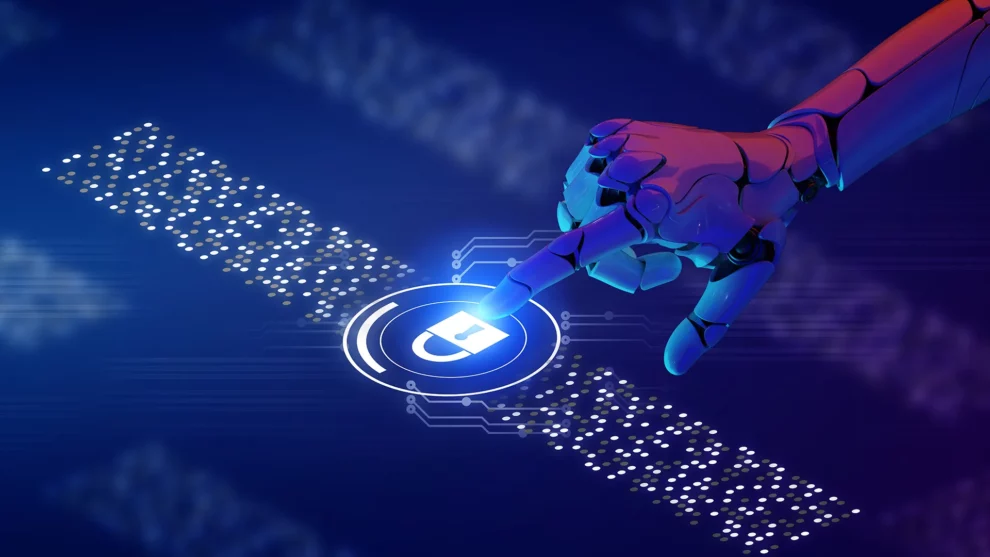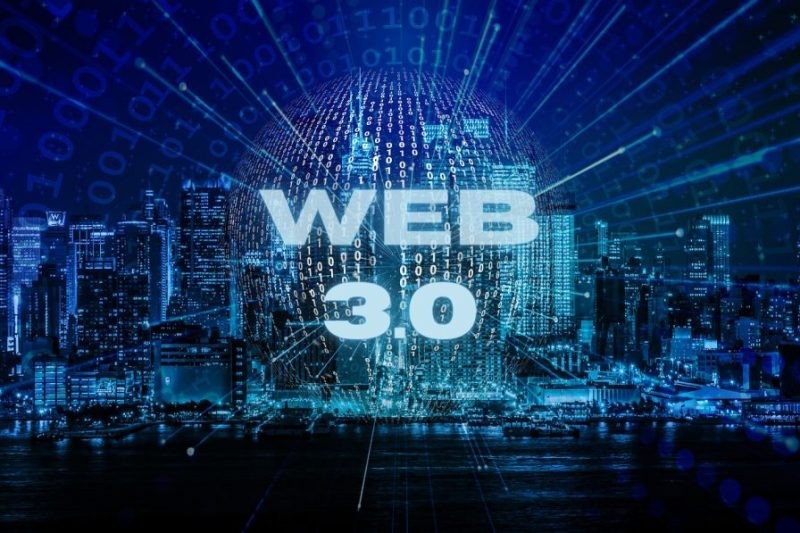The digital landscape grows more treacherous by the day. Behind the convenient apps and slick interfaces lurks an invisible world crawling with cyber threats. As our lives and livelihoods migrate online, a relentless game of cat and mouse unfolds in the virtual shadows.
On one side, cybercriminals leverage bleeding-edge technology like artificial intelligence (AI) to craft increasingly cunning scams and hacking strategies. On the other, cybersecurity researchers counter with AI-powered tools to thwart the barrage of attacks and protect our data.
This blog delves into the unfolding arms race between offense and defense in the world of cybersecurity. It explores how AI and other technologies shape innovations on both sides, and what’s at stake in this high-tech game of wits. Let’s dive in.
The Fraud Economy Arms Itself with AI
Swindlers and hackers are upping their game. Lured by the prospect of virtually unlimited targets and profit potential, cybercriminals now deploy advanced technologies to industrialize fraud and compromise data at scale.
AI sits at the leading edge of this criminal tech revolution. By automating tasks and customizing attacks, AI-powered tools heighten the threat landscape. Some ways fraudsters deploy AI include:
- Deepfakes for identity theft and financial fraud
- AI writing assistants to craft targeted phishing emails
- Self-learning botnets to overwhelm defenses with traffic floods
The implications are deeply troubling. A 2020 study found that AI could potentially increase business email compromise scams by 30%. Other estimates suggest that by 2025, AI could generate $7-$25 billion worth of annual online fraud losses worldwide.
Deepfakes Distort Reality for Profit
Few technologies represent the ethically ambiguous duality of AI as profoundly as deepfakes. On one hand, deepfake algorithms enable creative possibilities like inserting young Arnold Schwarzenegger into the next Terminator installment.
But in the hands of criminals, deepfakes become dangerous weapons. Using neural networks trained on recordings and images, fraudsters can effectively clone anyone’s likeness and voice.
Armed with synthetic media that depicts political figures making inflammatory comments or CEOs demanding urgent money transfers, threat actors can spark chaos and profit handsomely.
In 2021, a UK energy firm’s German parent company nearly transferred $243,000 to an account in Hungary after receiving audio deepfakes of company directors. This disturbing incident highlights the mainstream emergence of a once fringe technology.
Phishing Levels Up with Personalization
For decades, phishing has bedeviled companies and consumers despite extensive employee training and spam filtering. But AI threatens to shatter existing defenses by enabling hyper-targeted, personalized attacks.
By analyzing stolen data sets with natural language processing algorithms, criminals can mimic individuals’ speech patterns with frightening accuracy. And by leveraging information on social media platforms and the dark web, spear phishing emails can reflect extensive knowledge of potential victims’ interests and relationships.
The resulting messages easily bypass traditional red flags, tricking even cybersecurity professionals at times. In 2021, an AI writing algorithm convinced three executives to click on a phishing link with disturbingly high success rates.
Automating Cybercrime with Intelligent Botnets
Botnets underscore the industrialization of cybercrime powered by AI and other emerging technologies like the Internet of Things (IoT). By hijacking legions of insecure smart devices and coordinating them with AI algorithms, criminals can mechanize mass attacks on unprecedented scales.
In 2016, the Mirai botnet temporarily crashed major websites like Twitter, Spotify, GitHub, and the New York Times with floods of junk traffic. More advanced successor botnets embedded with evasion capabilities now pose even greater disruption risks.
As distributed computing lower barriers to complex ML systems, cybercriminals will gain affordable access to strength in numbers. Expect intelligent botnets and swarm tactics to become commonplace threats.
Fighting Code with Code: Cybersecurity’s AI Defenses
As the fraud economy weaponizes emerging tech, cybersecurity researchers respond in kind. AI and automation now sit at the core of many detection and response capabilities defending institutions and individuals.
By capitalizing on AI’s pattern recognition prowess, predictive capacity, and scalability, cybersecurity teams and solution providers counter the rising technological sophistication of attacks. Major applications include:
- Anomaly detection through real-time data analysis
- Predictive intelligence to anticipate new threats
- Adaptive access controls and identity verification
Sniffing Out Anomalies with AI
Like radial arteries stretching across a patient’s body, digital networks generate endless streams of log and performance data. Hidden within the hum of typical activity, the faintest signals can indicate breaches and zero-day exploits.
But finding these needles in haystacks often exceeds human capacity. AI anomaly detection bridges the gap by digesting huge volumes of data to flag deviations from baseline patterns in real-time. Whether it’s unusual login locations, spikes in DNS requests, or drifts in typical API calls, machine learning models can rapidly surface activities that warrant further investigation.
In 2021, Visa reported a 70% improvement in detecting cyber threats after implementing AI and machine learning. The capabilities also reduced incident response times from months down to hours or minutes.
Getting Inside Hackers’ Heads with Predictive Systems
AI’s pattern recognition capabilities also enable predictive threat intelligence to keep cybersecurity teams on the front foot. By analyzing vast threat data sets and even mimicking hacker behaviors, AI systems divine major attack vectors on the horizon.
In 2017, MIT trained a deep learning model called DeepPhish to generate potential phishing sites based on common web vulnerabilities. By modeling how attackers think, researchers gain valuable insights into the latest exploit trends to inform defenses.
More advanced reinforcement learning systems move beyond observations to actively probe defenses. In 2016, DARPA conducted the Cyber Grand Challenge pitting AI systems against each other to find software vulnerabilities. The contest offered a glimpse into AI-powered penetration testing and threat hunting.
Adapting Identity Verification with Contextual Signals
As deepfakes and phishing threats escalate, legacy perimeter defenses like static passwords have become antiquated. In response, cybersecurity innovators now offer adaptive access controls that continually analyze risks to step up identity checks when needed.
By examining metadata like user locations, devices, and behaviors, AI algorithms assess the context of each login attempt or transaction request. Higher risk signals then trigger additional verification through methods like biometrics and one-time codes.
In 2022, Microsoft and NIST reported AI-powered continuous authentication reduced identity fraud by up to 90% compared to relying solely on passwords. As threats evolve, expect AI and ML to become central pillars of identity and access management.
The Ongoing Struggle between Chaos and Order
The battle lines between cybercriminals and cybersecurity extend beyond any single technology. At its core, the confrontation speaks to opposing forces seeking to tilt the digital landscape towards chaos or order.
As expanding attack surfaces, distributed infrastructure, and democratized technologies empower individual threat actors, the372 struggle grows more asymmetric and unpredictable. And yet, behind each malicious innovation lies a human impulse toward creation, curiosity, and imagination — however misguided.
In the same vein, cybersecurity represents an exercise in community, clarity, and collective human progress. Every ethical hacker patching vulnerabilities, every researcher sharing discoveries, every engineer envisioning safer systems inches civilization forward.
Neither side can claim permanence in this fluid cyber arena. The only real constant is ongoing change and adaptation. To understand the future contours of this struggle is to recognize our imperfection and interdependence as builders and dreamers.
Perhaps one day innovations like AI will fuel breakthroughs allowing universal cyber peace. Until then, vigilance and care remain our best hedge against chaos.
Ongoing Pursuit of the Upper Hand
For the foreseeable future, the arms race dynamic between cyber attacks and cyber defenses will intensify as emerging technologies progress. Even as AI and automation transform threat landscapes, continuous innovation accelerates across both camps.
Maintaining security and trust necessitates proactive, collaborative investments grounded in ethics and shared progress:
- Information sharing: Promoting transparency and communication between cybersecurity researchers, technology providers, and public sector institutions to analyze vulnerabilities and get ahead of threats.
- Ongoing R&D: Providing adequate funding for laboratories, academic institutions, and technology startups to move cybersecurity forward with next-generation capabilities.
- holistic education: Teaching core cybersecurity principles and best practices beyond IT departments to employees across organizations and casual internet users alike.
Ultimately, cybersecurity relies on empowered, security-conscious communities and balanced oversight fueling technology’s progress rather than impeding it.
Preparing for Web 3.0 and the Metaverse
On the horizon looms a convergence of bleeding edge technologies threatening to expand digital attack surfaces exponentially. The seismic rise of Web 3.0, the metaverse, and the Internet of Things (IoT) multiplies the data, devices, and entry points vulnerable to compromise.
Early previews of this hyper-connected future already highlight major security gaps. In 2022 researchers discovered significant weaknesses in the blockchain ledger systems underpinning cryptocurrencies and NFTs. And virtual worlds like Roblox and Fortnite grapple with user safety issues ranging from predatory behavior to identity theft.
As architects of the next generation internet lay the foundation for millions to work, play, and transact in shared virtual spaces, security stands paramount. Some imperatives in the Web 3.0 era include:
- Engineering robust encryption into decentralized and distributed systems.
- Instituting identity frameworks and access controls preemptively before mass adoption.
- Promoting diversity and community participation in developing ethical virtual worlds.
With vigilance and care, we maintain hope this strange new digital frontier may empower society’s best aspirations rather than our worst instincts.
The Role of the Public and Policymakers
While much spotlight shines on the engineers and hackers battling in cyberspace’s trenches, the broader ecosystem plays a crucial role. Public awareness, responsible regulation, and smarter economic incentives can positively shape cybersecurity’s evolution.
As fraud volumes hit all-time highs year after year, education represents the first line of defense. Promoting digital literacy and best practices among internet users offers protection against unsophisticated phishing attempts and routine criminal activity.
Policymakers also maintain an obligation to institute rational guidelines around emerging technologies. Regulations should promote transparency and accountability while giving researchers sufficient flexibility to innovate. Achieving the right balance remains an ongoing struggle across industries.
Finally, the harsh reality is that cyberattacks generate huge profits with relatively little risk. Altering these economic incentives by imposing harsher penalties and denying safe harbor could help deter threat actors.
Of course, the multifaceted nature of cybersecurity introduces many trade-offs between privacy, access, norms, and security. But through cooperation between public and private stakeholders, a path exists where technology’s benefits outweigh the risks.
Final Thoughts
The deepening interplay between cutting-edge technologies and human adversaries marks the next chapter in cybersecurity’s unfolding history. As new innovations like AI, Web 3.0, and the metaverse take shape, so too will their accompanying threats.
Yet through continuous innovation, collaboration, and social progress, a resilient equilibrium exists where cyber risk does not overshadow technological gains. Core to this vision persists a recognition of our shared fallibility and interdependence as builders of increasingly complex systems.
By lifting each other up and taking responsibility for our digital neighborhood, we plant the seeds for a safer, more empowering future that technology promises. The tools matter less than the hands that ultimately wield them.

















Add Comment